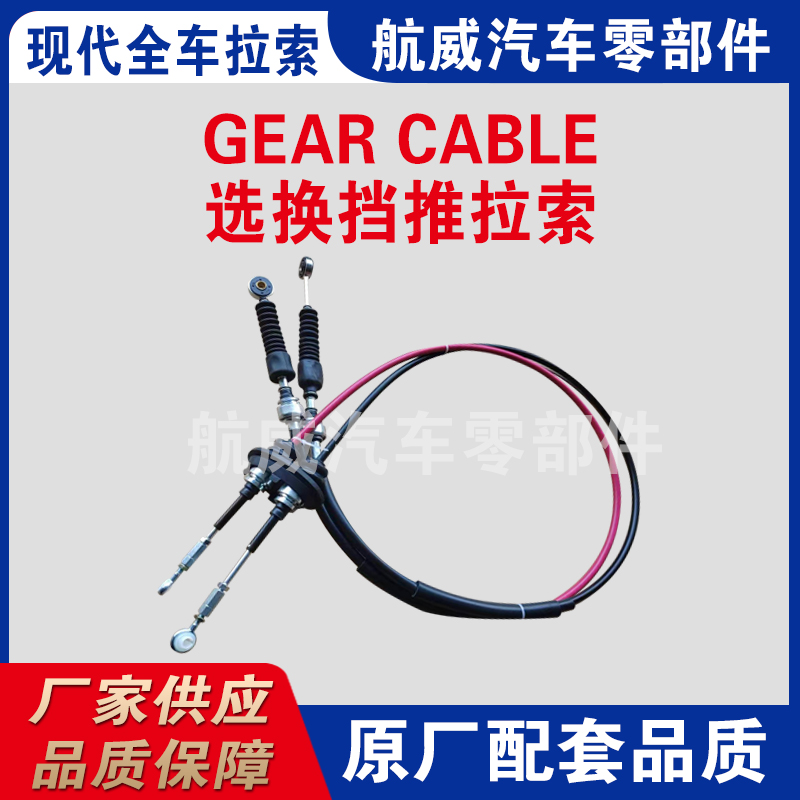broken gear shift cable
Understanding the Impact of a Broken Gear Shift Cable
A functioning vehicle is essential for daily commuting, leisure activities, and various transportation needs. However, one problem that drivers may face is a broken gear shift cable. This seemingly minor component can have significant implications for the overall performance and safety of a vehicle. Understanding what a gear shift cable is, the signs of a break, and the steps to take when faced with this issue is crucial for every driver.
The gear shift cable is an integral part of the automotive transmission system that connects the gear lever to the transmission itself. When you move the gear lever to shift gears, the cable transmits that motion to the transmission, allowing for smooth gear changes. A broken or malfunctioning gear shift cable can prevent the driver from shifting gears altogether, leaving the vehicle stuck in one gear or rendering it inoperable.
The signs of a broken gear shift cable can vary, but there are key indicators to watch for. One common symptom is difficulty in shifting gears. If the gear lever feels stuck or requires excessive force to move, it may be a sign that the cable is damaged. Drivers might also experience unusual noises, such as grinding or popping sounds, while attempting to shift gears. Moreover, if the vehicle won’t start in park or neutral despite being in those positions, it could indicate a disconnect in the gear shift cable mechanism.
broken gear shift cable

The consequences of ignoring a broken gear shift cable can be severe. Continuing to drive with a malfunctioning cable can lead to further damage to the transmission, which is a much more costly repair. Additionally, the inability to shift gears can pose a safety hazard, especially if it occurs while driving at higher speeds or in heavy traffic. Stuck in one gear, a driver may find themselves unable to accelerate or decelerate as needed, increasing the risk of accidents.
If you suspect that your gear shift cable is broken or malfunctioning, taking prompt action is essential. The first step is to consult the vehicle's owner’s manual for any specific instructions or recommendations related to transmission issues. If you are not mechanically inclined, it is advisable to seek the expertise of a certified mechanic. They have the tools and knowledge necessary to diagnose the problem accurately and perform the necessary repairs.
Repairing a broken gear shift cable may involve replacing the cable itself, which is a relatively straightforward process for an experienced mechanic. In some cases, additional components, such as the gear lever or transmission linkage, may also need attention. Early detection and resolution of the issue can help prevent costly repairs and ensure that the vehicle remains safe and operational.
In conclusion, while a broken gear shift cable might seem like a minor inconvenience, it can significantly impact the functionality and safety of a vehicle. Recognizing the signs of a malfunction and taking immediate action can prevent further complications. As with many automotive issues, prevention is key; regular maintenance and check-ups should include inspections of the transmission system and its components. By staying proactive, drivers can ensure a smoother, safer driving experience and protect both their vehicle and their safety on the road. Understanding this part of your vehicle is essential, as it plays a crucial role in the day-to-day operation of your car, and a broken gear shift cable is an issue that no driver should overlook.
-
Workings of Clutch Pipe and Hose SystemsNewsJun.04,2025
-
The Inner Workings of Hand Brake Cable SystemsNewsJun.04,2025
-
The Secrets of Throttle and Accelerator CablesNewsJun.04,2025
-
The Hidden Lifeline of Your Transmission Gear Shift CablesNewsJun.04,2025
-
Demystifying Gear Cables and Shift LinkagesNewsJun.04,2025
-
Decoding Clutch Line Systems A Comprehensive GuideNewsJun.04,2025
